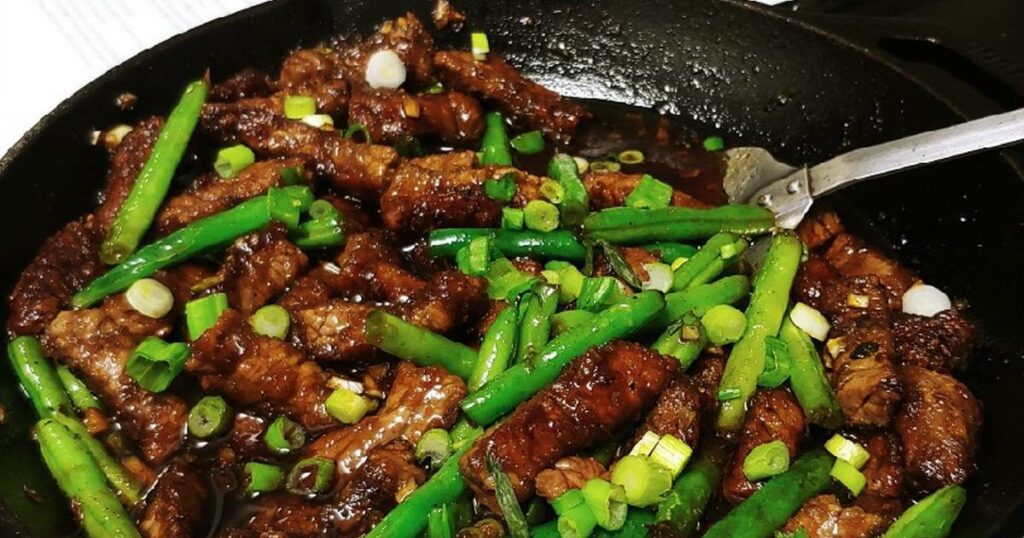Many people who can’t handle the spice of dishes like Mapo Tofu or Kung Pao Chicken in Chinese restaurants prefer Mongolian beef. Its sweetness appeals to children, and even adventurous eaters consider it comfort food. The dish is made with flank steak, a lean and occasionally chewy cut of beef marinated in brown sugar, soy sauce, ginger, and garlic. By slicing the steak thinly enough, the chewiness can be reduced. But did you know the dish did not originate from Mongolia?
Mongolian beef served in Chinese restaurants is not from Mongolia. It originated from Mongolian BBQ restaurants in Taiwan. A Taiwanese entrepreneur founded Mongolian BBQ restaurants in the 1950s.
Where Does Mongolian Beef Actually Come From?
Many people who can’t handle the spice of dishes like Mapo Tofu or Kung Pao Chicken in Chinese restaurants prefer Mongolian beef. Its sweetness appeals to children, and even adventurous eaters consider it comfort food. The dish is made with flank steak, a lean (if occasionally chewy) cut of beef marinated in brown sugar, soy sauce, ginger, and garlic (via Dinner Then Dessert). By slicing the steak thinly enough, the chewiness can be reduced. Did you know where does Mongolian Beef actually came from?
Mongolian beef served in Chinese restaurants is not from Mongolia. It is sourced from Mongolian BBQ restaurants in Taiwan. A Taiwanese entrepreneur founded Mongolian BBQ restaurants in the 1950s.
The Beginning of Mongolian Beef
Mongolian beef served in Chinese restaurants is not from Mongolia. It is sourced from Mongolian BBQ restaurants in Taiwan. A Taiwanese entrepreneur founded Mongolian BBQ restaurants in the 1950s.
However, Mongolian barbecue is not at all Mongolian, and the restaurant concept was invented in the 1950s in Taiwan by a restaurateur named Wu Zhaonan (via Oola). The idea of being able to choose your meats, vegetables, and sauces and having them all stir-fried together and presented in a bowl was well received by diners who appreciated the variety and power they had to create their meal rather than having a chef do so for them. Mongolian beef was one of the most popular combinations served at these establishments.
The True Mongolian Beef
The concept of referring to a restaurant as “Mongolian” in China contributed to the establishment’s exoticism. The Mongolian barbecue restaurants that sprang up at the time were also heavily influenced by Japanese teppanyaki restaurants, where meats, vegetables, and sauces are stir-fried together on a hot griddle, so while a number of different Asian countries influenced different aspects of Mongolian beef, Mongolia is not one of them.
True Mongolian food, on the other hand, includes many yak milk products like yak milk cheese and yak milk kefir. Borts, a jerky made of beef, goat, or camel meat, is popular as a way to keep meat on hand during the harsh winters. Dumplings, soups, stews, and other dishes primarily made with meat and root vegetables are common, but nothing resembles Mongolian beef.
(Source:Mashed)
The Meat-Addict Mongolians
Mongolians have traditionally consumed meat every day. They became grumpy and out of sorts if they went several days without eating meat. They were happy again after stuffing themselves with mutton. Horse meat was occasionally consumed, but only at religious ceremonies and festivals because the horse was considered sacred by the Mongols. A steppe nation, they traditionally roast meat over an open fire — or boil it if it’s less tender. A goat or a lamb can be roasted whole or in sections, such as a leg of lamb.
Mongolian Hot Pot is a traditional winter dish eaten by Mongolians and non-Mongolians throughout northern China, consisting of frozen curd, bean flour noodles, beef, and mutton cooked with other ingredients and spices in a boiling pot in boiling oil and broth.
(Source:MonglianVillageWest)
Image from Cookpad
